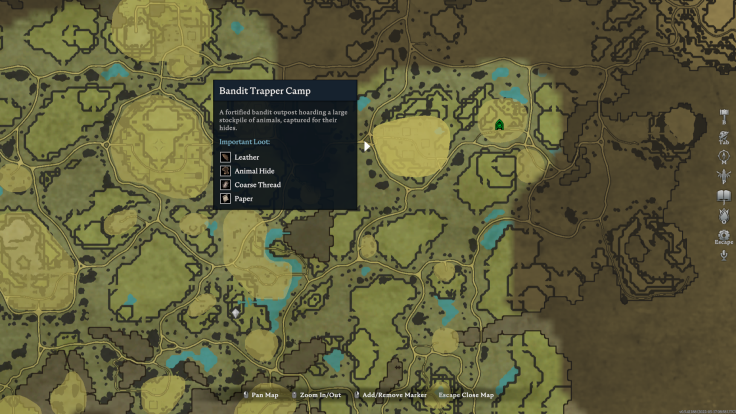'V Rising': How To Get Leather

Leather is one of the core crafting components in “V Rising” and one of the more frequently-used resources when it comes to crafting gear.
Early in the game, players will be tasked with finding some leather for one of the early quests. Unfortunately, getting this resource isn’t as simple as hunting down some animals. Players will need to either farm bandits or craft their own leather through a Tannery.
The Tannery is a crafting station that, among other things, converts animal hides into leather. Building a tannery might take some time, though, as its recipe is locked behind a boss fight.
To unlock the Tannery recipe, players need to defeat Keely the Frost, an archer who wields the power of ice. She can be found in the Bandit Trapper Camp located on the eastern side of the Farbane Woods. Keely can be tracked via the Blood Altar, or players can simply head up to her camp, which is right next to a Vampire Waygate.

Keely the Frost's location in V Rising Photo: V Rising
Incidentally, the Bandit Trapper Camp also has plenty of leather laying about. Defeat Keely and her minions, then smash every object in the camp for a chance to get even more leather.
Once Keely’s blood has been extracted, the Tannery should become craftable. Go to the Build menu (“B” by default on the keyboard) and go to the Crafting section. The Tannery should be in the Refinement tab along with the other crafting stations.
Place the Tannery anywhere in a player-controlled castle and use it like a Sawmill. It will automatically convert hides into leather so long as the base’s Castle Heart is powered up with Blood Essence.
To get the most out of the Tannery and every other crafting station, place it inside an enclosed room surrounded by walls and floors from the Castle section of the Building menu. Roofing will automatically be placed on top of enclosed areas and crafting stations inside of them will get a 25% boost to crafting speeds.
Make sure to use the Workshop floor tiles when making crafting rooms to reduce the total amount of resources needed for their respective materials.




















